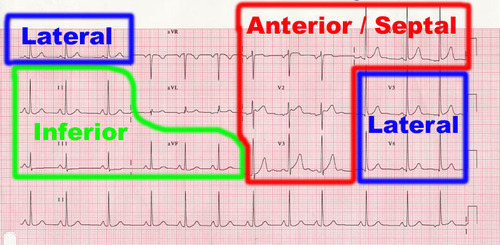

Think of each lead like a camera, taking a snapshot of the heart’s electrical activity. A 5-lead provides a lot of information, but if something concerning is noted, a 12-lead ECG is ordered to provide even more information. This means they’ve got 5 leads (wires that are connected to things that connect to adhesive pads) attached to their chest, and you can see their rhythm at all times at the nurse’s station and/or the bedside monitor.īedside nurses are responsible for monitoring these rhythms, watching for changes and notifying the physician regarding changes and concerns. Most cardiac patients are on a telemetry monitor. 5 Lead ECGīefore we dive into interpretation – let’s clarify one important thing. You may run across people who are adamant one way or the other, but it’s nothing to get your telemetry leads all twisted up 🙂 12-Lead ECG vs. You can confidently use EKG and ECG interchangeably.

colour) and doesn’t not change the meaning of the abbreviation. It’s a basic difference in spelling and language (like color vs.

Well, it originates from the German spelling of electrocardiogram (elektro-kardiographie). You may be wondering where that K comes from in EKG. You’ll hear it called both and they both mean electrocardiogram.

In addition to the classic 12 ECG leads, the leads of the right and posterior heart can be calculated, making it an all-encompassing 22-lead ECG. The 360° lead system is based, as with the EASI ECG, on the vector loop of a vector ECG. For example, it is very cumbersome to attach electrodes to the back of a patient experiencing an infarct. This can be due to time constraints, usability problems and lead placement issues, as well as a lack of education. However, according to guidelines, the posterior and right heart wall leads should also be measured when a heart attack is suspected.


 0 kommentar(er)
0 kommentar(er)
